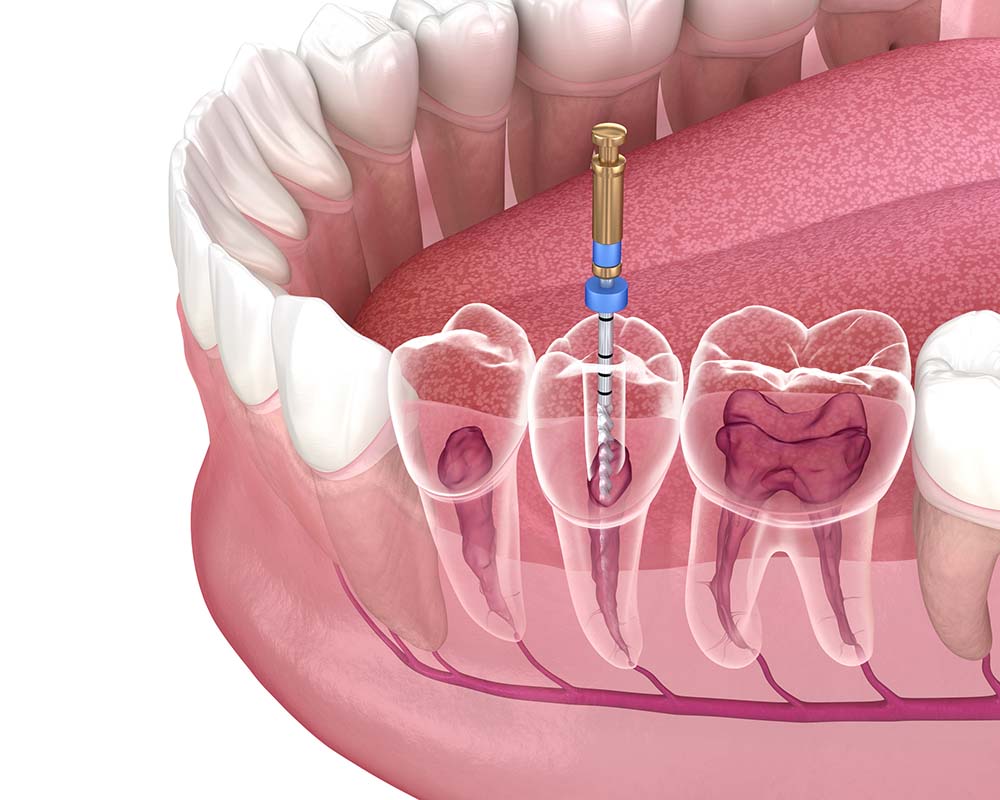Family Dentistry
Family Dentistry
Root Canal
Root canal therapy is a common dental procedure used to treat a severely decayed or infected tooth. The procedure involves removing the damaged pulp from the tooth’s root canal and replacing it with a filling. Although root canals have a reputation for being painful, they are typically no more uncomfortable than getting a filling. In fact, getting a root canal can actually alleviate pain and improve oral health.
Symptoms & Risks
Symptoms of a damaged tooth that may require a root canal include severe tooth pain, sensitivity to hot or cold foods or liquids, swelling, and tenderness. If left untreated, an infected tooth can cause a painful abscess, which can spread to other parts of the body and lead to serious health problems. By getting a root canal, patients can avoid the need for more extensive and costly dental procedures in the future.
The most common cause of a damaged tooth is a deep cavity that has reached the pulp. Other causes include trauma to the tooth, such as a chip or crack, and repeated dental procedures on the same tooth. Poor oral hygiene, a diet high in sugar and starch, and genetics can also increase the risk of developing a damaged tooth.
Remove Damaged Tissue
During a root canal procedure, the dentist or endodontist will numb the area around the affected tooth and make a small hole in the top of the tooth to access the pulp. They will then remove the damaged pulp and clean the inside of the tooth. After the pulp has been removed, the tooth will be filled with a biocompatible material and sealed with a temporary filling. In most cases, a crown will be placed on the tooth to protect it from further damage.
Comfort Numbing
While root canal therapy has a reputation for being painful, the procedure itself is no more uncomfortable than getting a filling. Most patients report feeling little to no pain during the procedure, and any discomfort can be managed with over-the-counter pain relievers.
Benefits
There are several benefits to getting a root canal.
- The procedure can save a damaged tooth from needing to be extracted.
- By preserving the natural tooth, patients can avoid the need for more costly and time-consuming dental procedures, such as dental implants or bridges.
- Getting a root canal can alleviate pain and improve overall oral health.
- By removing the damaged pulp and preventing further infection, patients can enjoy better oral health and avoid the need for more extensive dental work in the future.
In addition to these benefits, getting a root canal can also improve the appearance of the affected tooth. By placing a crown on the tooth, the dentist can restore the tooth’s natural shape and color, giving patients a more attractive smile.
Reduced Risks
While root canals are a safe and effective treatment for damaged teeth, there are some risks and complications associated with the procedure. These include infection, nerve damage, and damage to surrounding teeth and tissues. However, these risks are relatively rare, and most patients experience a full and quick recovery following the procedure.
Ask the Dentist
Getting a root canal can alleviate pain, improve oral health, and save a damaged tooth from needing to be extracted. Although the procedure has a reputation for being uncomfortable, most patients experience little to no pain during the procedure, and any discomfort can be managed with over-the-counter pain relievers. If you are experiencing symptoms of a damaged tooth, such as severe pain or sensitivity, it is important to see a dentist as soon as possible to determine if a root canal is necessary. Schedule a free consultation with the dentist, today!




